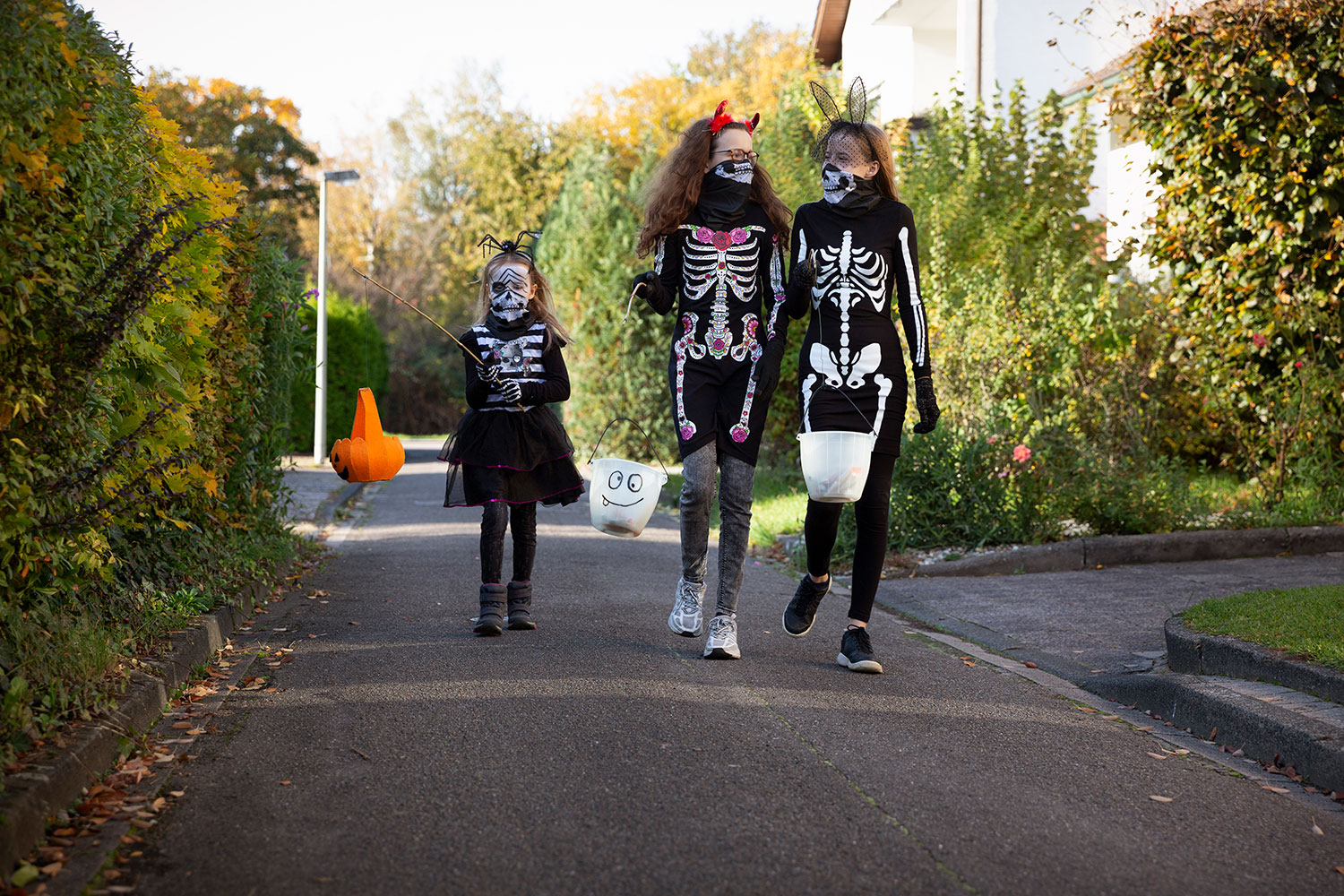
October 27, 2023, 4:45 p.m.
The Hospitalist Team
Halloween is here, which means it’s time for one of childhood’s best traditions, trick-or-treating! An exciting and contrary activity in which kids are encouraged to approach people’s homes and accept candy from adults. Given the discrepancy in safety expectations between Halloween and every other day of the year, parents can find it challenging to know when it’s okay to allow their children to go trick-or-treating without adult supervision.
Approaching this dilemma from a behavioral lens can be helpful. Rather than asking the abstract question of, “can my child go trick-or-treating alone,” try breaking it down into individual and definable tasks. This creates benchmarks for you to assess your child’s ability to trick-or-treat independently. Below are some safety tasks I believe are necessary for kids to master before heading out on their own trick-or-treating adventure.
Halloween Safety Behaviors
Follow Directions
Depending on where you live, your child might be trick-or-treating in their neighborhood or venturing into a less familiar location. Regardless of where your child is trick-or-treating, they should know where they are going. Map out the route and walk it with them in both daylight and at night. This can help your child become more comfortable navigating their trick-or-treating path. Making sure your child can locate street signs is also important in case they get lost and need to ask for directions.
Know Identifying Information
This might seem obvious, but your child should be able to tell someone their full name, where they live, and know your contact information before letting them leave the house unsupervised. If something were to happen and they needed to seek help, they could tell people who they are and how to get ahold of their family.
Stranger Danger
Children should be able to discern suspicious adults from trustworthy adults. The message we want to send our children is not to be wary of all adults they don’t know because most adults are helpful. However, we want them to be aware of adults engaging in odd behaviors and boundary crossings. Children should know that adults should not be asking children for help or asking them to come inside their house. They also shouldn’t follow them to another location, and they should not intentionally touch them or invade their personal space. It’s also important your kids know what to do if they encounter someone doing these things. Coming up with a safety plan of what to do in these scenarios will help everyone feel more prepared.
Traffic Safety
Knowing how to cross the street safely is a necessary skill to have to navigate neighborhoods without adult supervision. Before you let your child embark on their own Halloween festivities, they need to be able to safely cross the street by themselves. This is especially important given that most trick-or-treating events are at night, which increases the risk of traffic accidents. Ensuring that your child knows and is able to stop and look both ways before crossing the street will help reduce their chance of getting into an accident.
Adhere to a Curfew
Being left to do your trick-or-treating is a task that requires trust. Trusting that your child will return home by curfew is necessary when allowing your child to do things more independently. Making curfew requires the ability to tell time. Providing them with a watch, or better yet- a phone, can help with curfew adherence.
What if my Child can’t do all of these Tasks?
If your child cannot do one or more of these tasks, that’s okay! You can still foster feelings of independence and competency in your child without compromising their safety. Take the approach of allowing them to do everything they can do independently and providing support for the tasks they cannot do by themselves. For example, if you trust your child to approach people’s houses safely but do not trust them to cross the street safely, you can locate a spot to cross the street together and have them approach houses on their own while you wait at the crossing spot. Working together with your child to come up with solutions is also a great way to foster collaborative problem-solving skills. This will help them be more independent in the future – it’s a win-win!
Remember, the purpose of trick-or-treating is to have fun. Whether your child is ready to go independently or not, take a moment to enjoy your child’s experience (and save yourself some candy…you’ve earned it)!









